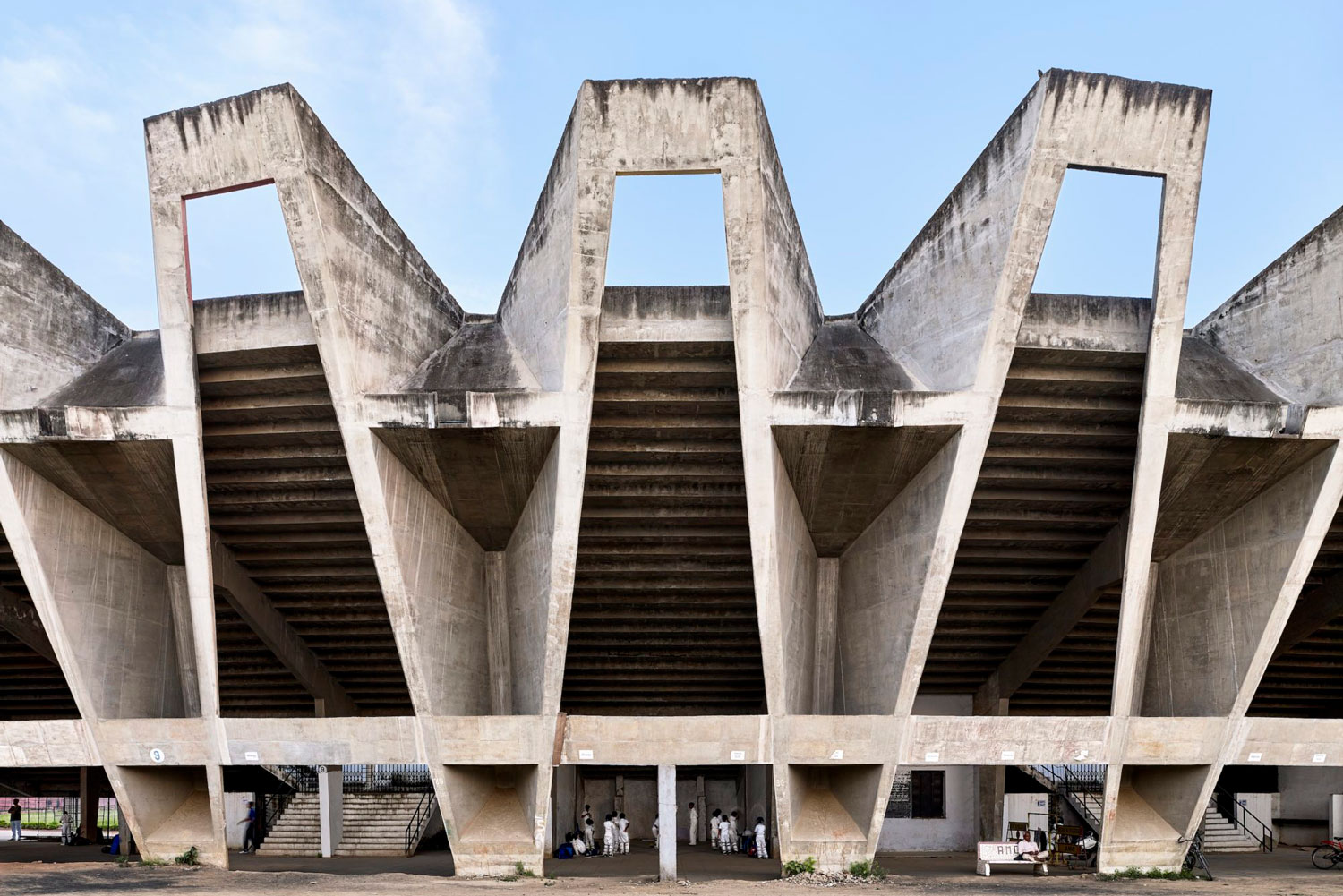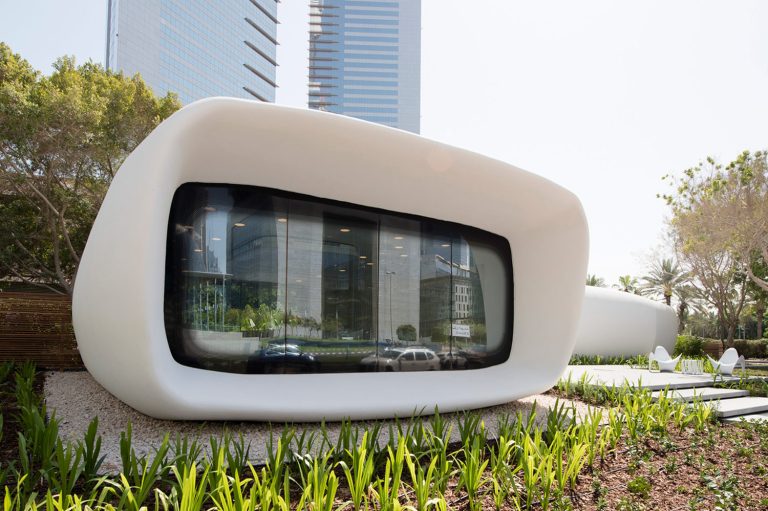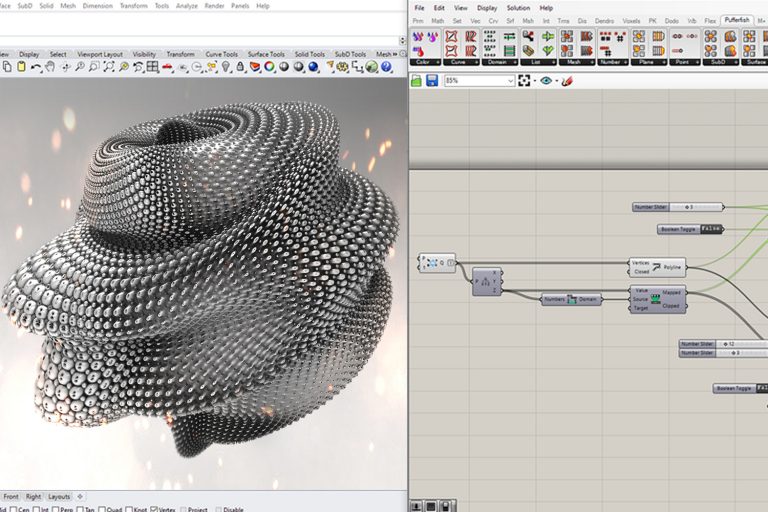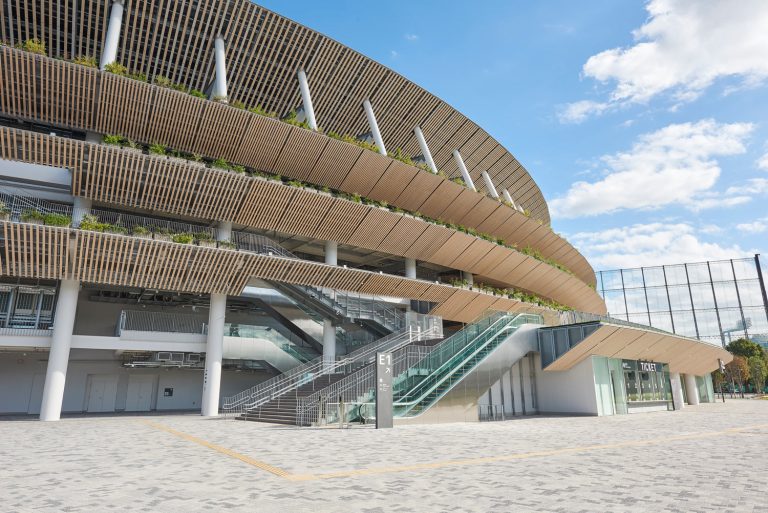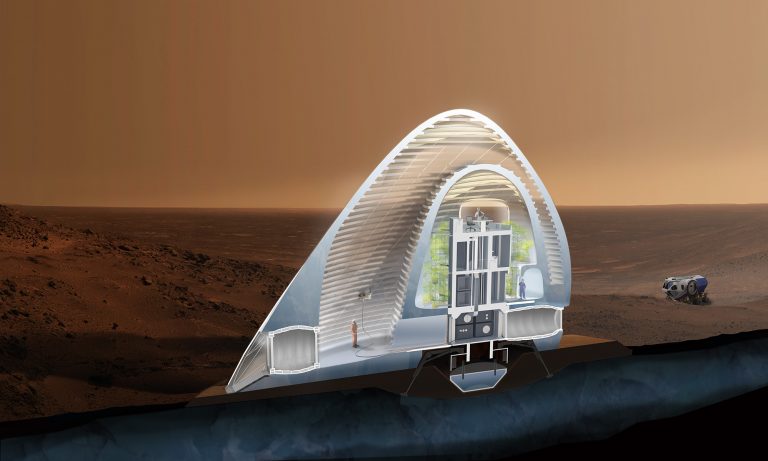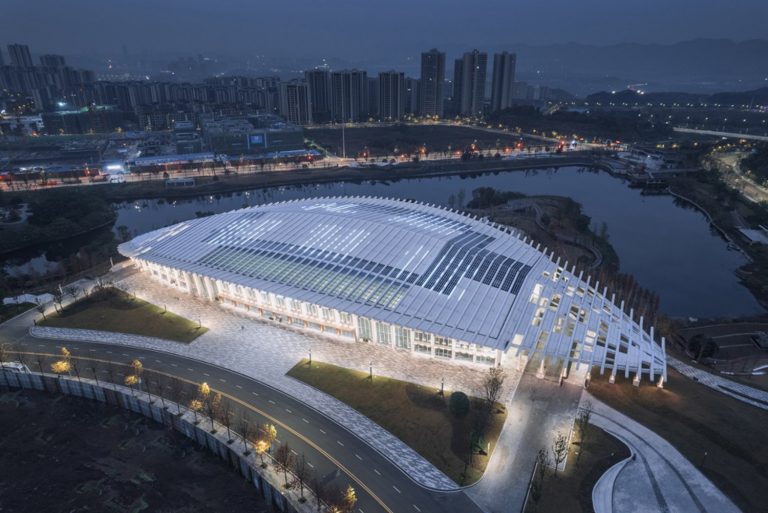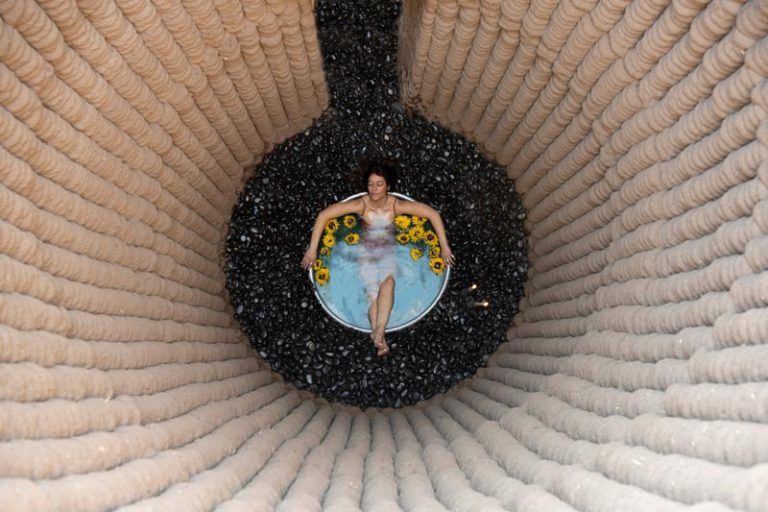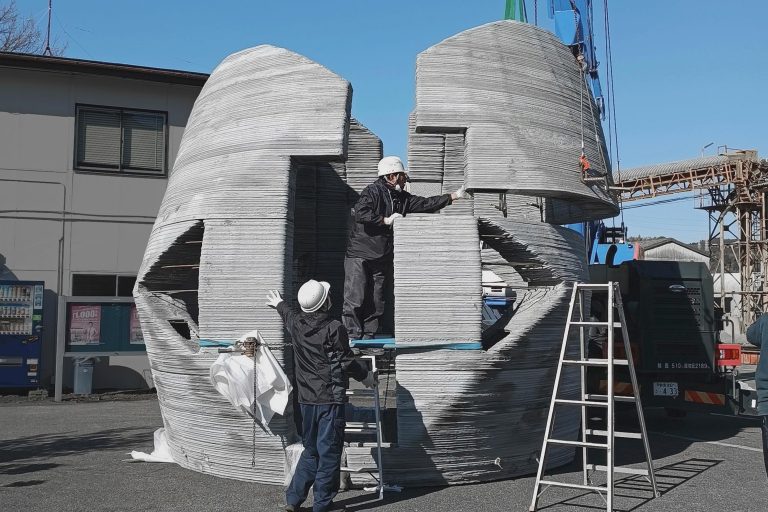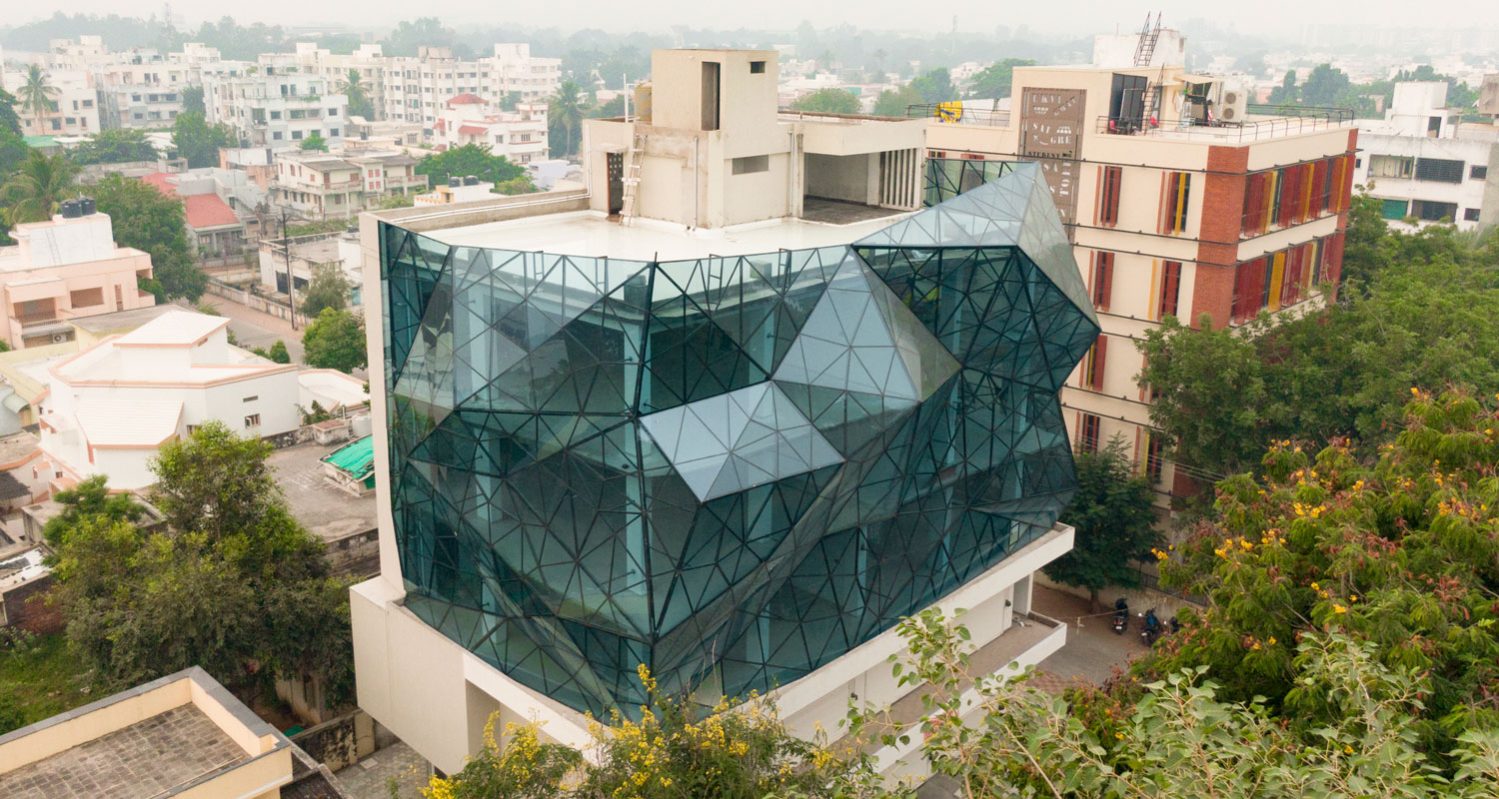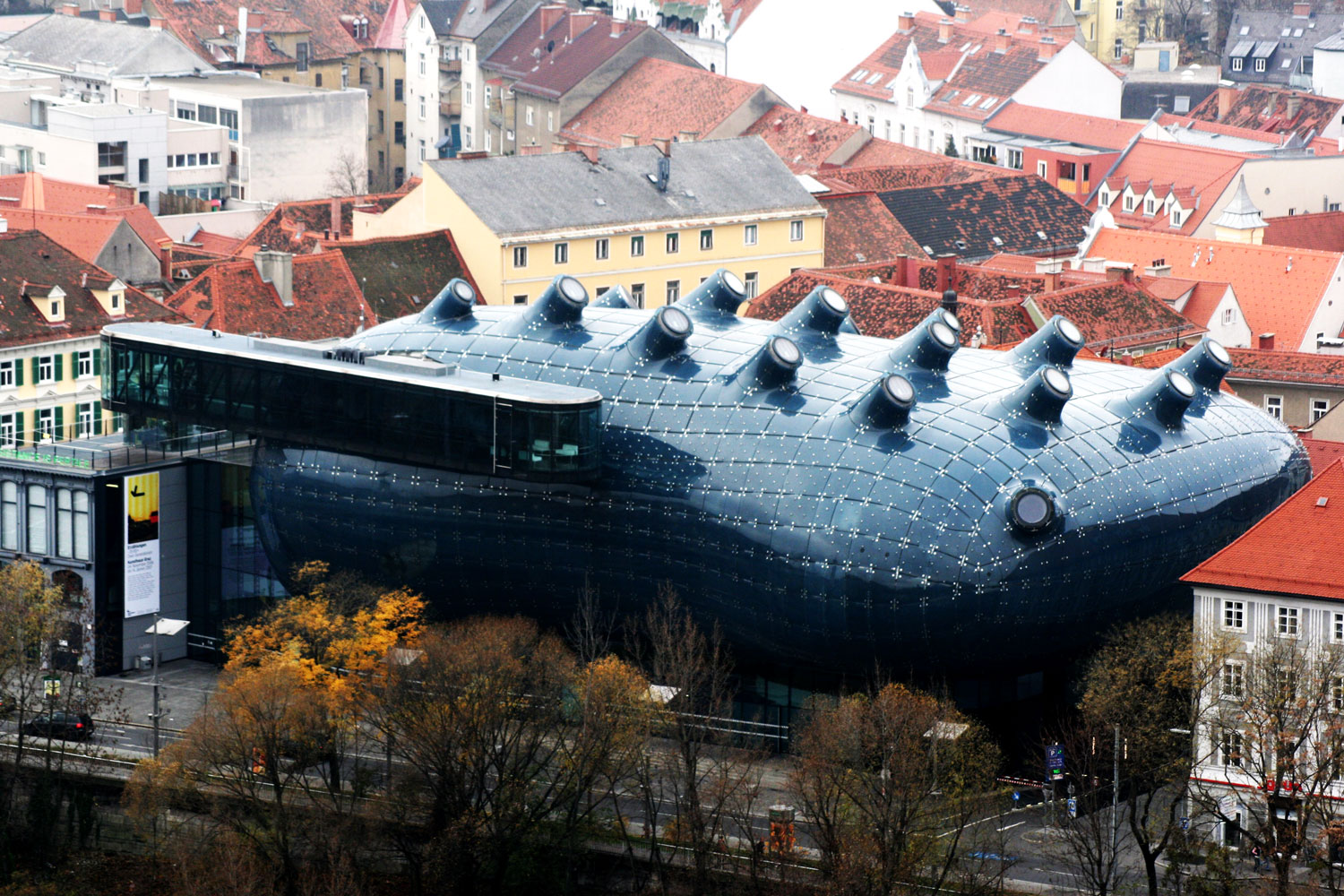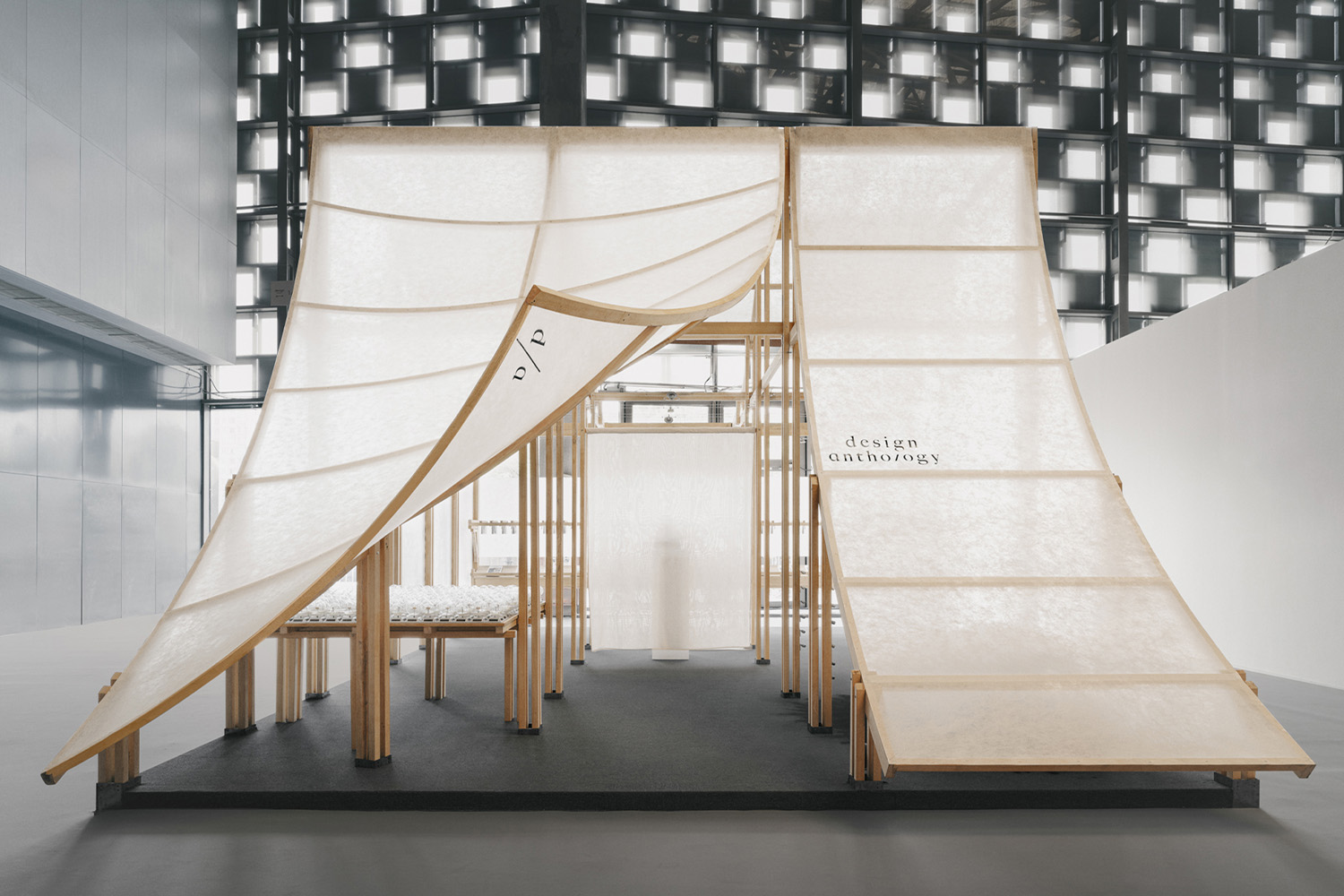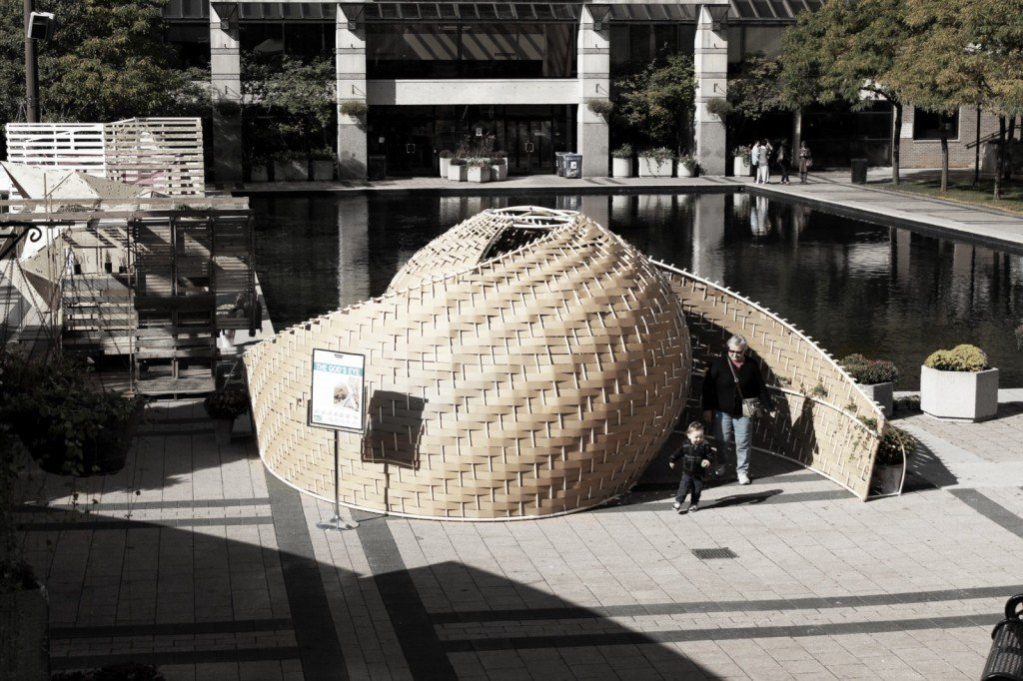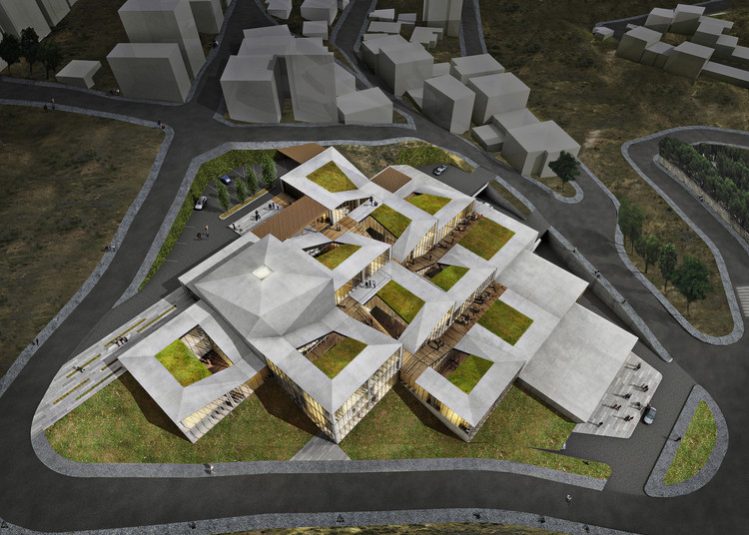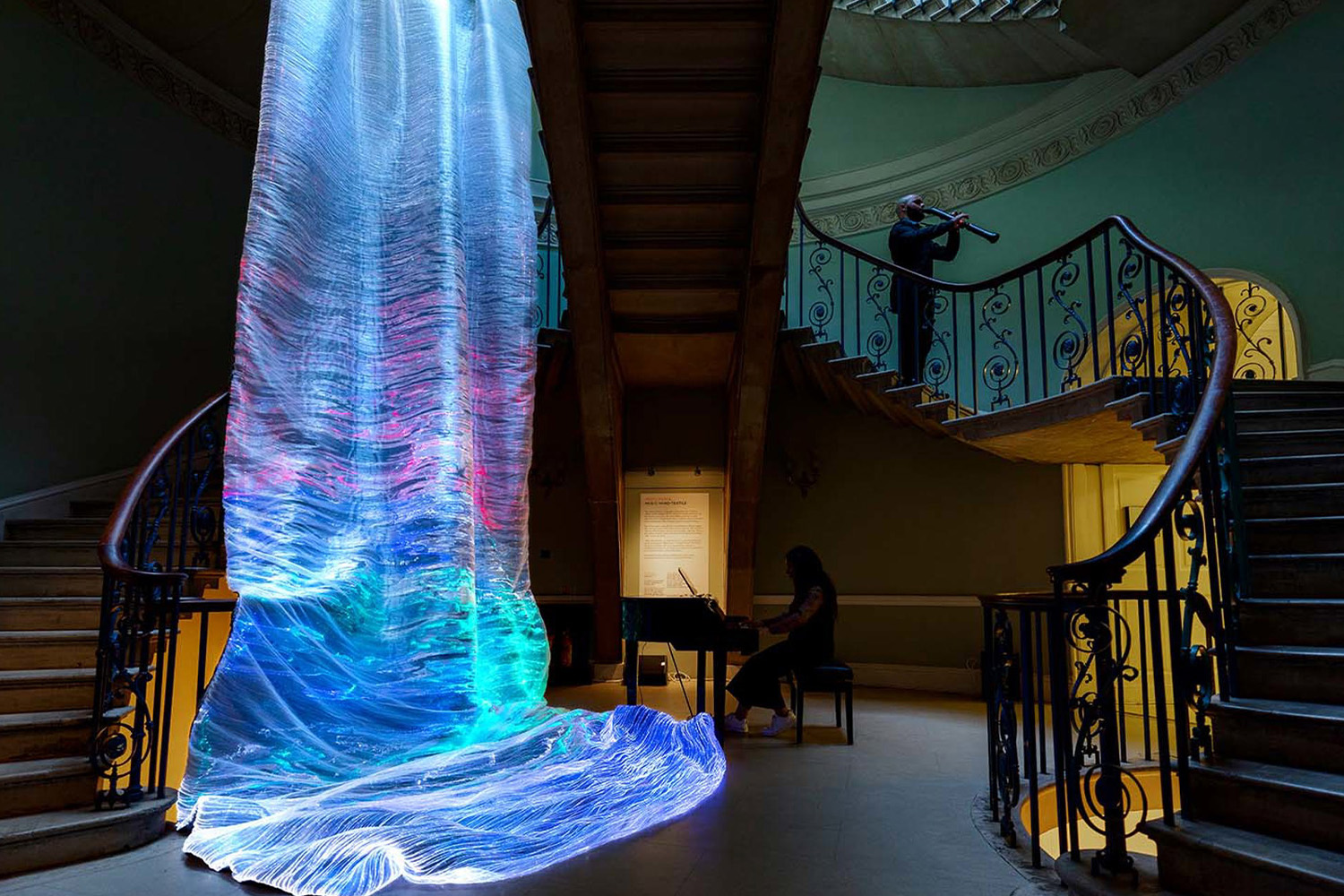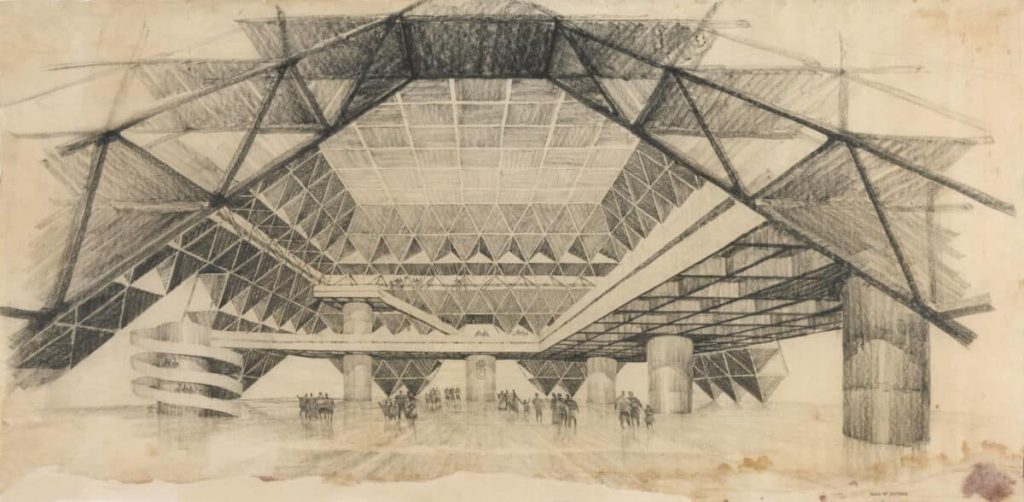
In the mid-20th century, with the attainment of independence in South Asia, many cities’ appearances changed along with the architectural style. Now called post-colonial architecture, it began with the independence desire and triggered symbolic new beginnings in architecture. Along with international modernism, it not only affected the city aesthetically but also reflected the means of freedom from colonial powers. Local modernisms were created that affected the city with culturally specific and site knowledge.
Each newly independent country of India, Pakistan, Bangladesh (formerly East Pakistan), and Sri Lanka (formerly the British Crown Colony of Ceylon) have distinguished buildings that represent the modern architectural approach. This changing architectural approach became a means for declaring participation in progressive global politics, building a common regional identity, and separating from the colonial past.
“Independence brings in the greatest opportunity for a nation to express its thoughts, talent and energy… Now, we the architects can construct the right and distinct kind of architecture for an independent people.”
Muzharul Islam
Some of the iconic buildings in South Asia that represent the early times of this historical change are now facing demolition threads and falling into disuse. Highlighting their importance in the culture’s history, these groundbreaking modern buildings represent the autonomy of today’s India, Pakistan, Bangladesh, and Sri Lanka, articulating their national identities and enacting social progress after the end of British rule in 1947-48. This article aims to present unique examples and showcase their bold appearances.
Here is a list of 8 distinctive buildings from the post-colonial period in South Asia:
1. Kamalapur Railway Station
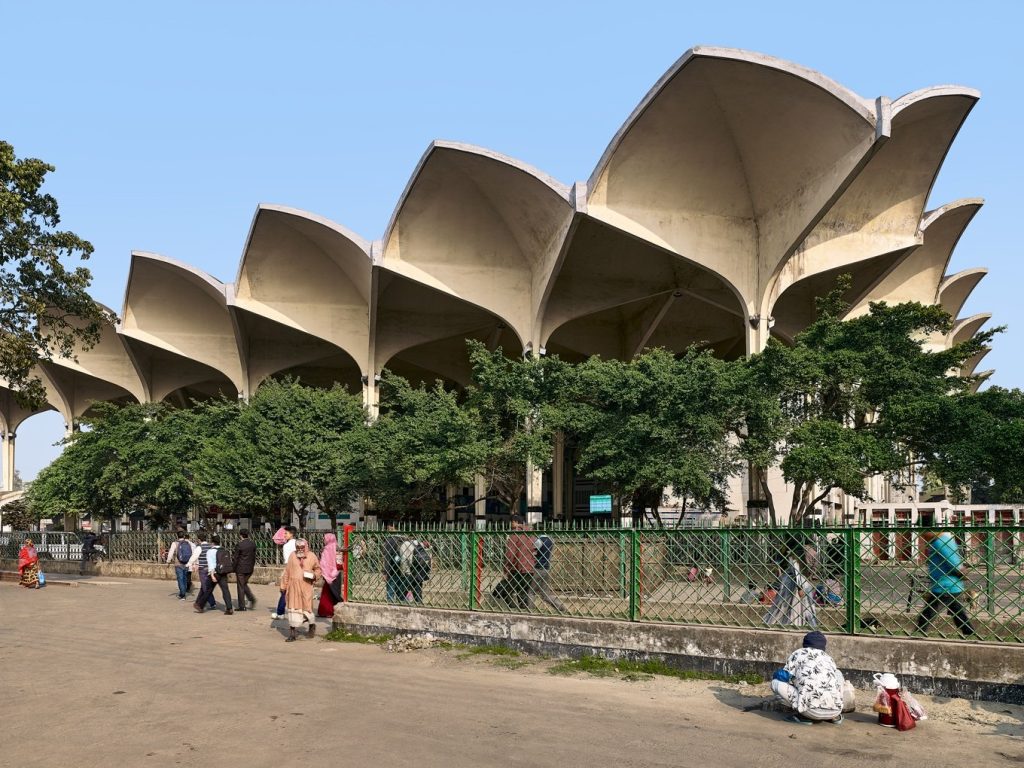
Built: 1961-1968
Architects: Daniel C. Dunham and Robert G.Boughey
Location: Dhaka, Bangladesh
Kamalapur Railway Station is the main railway station of Dhaka. It is the largest and busiest transportation infrastructure in the country that acts as a gateway. The railway was built during the British-Indian period, but the station was built during the Pakistan period. After its completion in 1986, this station witnessed the three periods of Bangladesh’s history with the liberation war in 1971. With its distinctive appearance and modernist spirit, it is a significant iconic place for the city.
At Kamalapur, Dunham and Boughey’s challenge was to develop a wide-span structure that would synthesize the language of modern architecture with the needs of a tropical climate. The result was the train terminal’s distinctive concrete roof structure, which features a parasol roof that covers a network of low-rise buildings. A classic image of tropical weather, where an umbrella gives protection from the monsoon rains, is evoked by the terminal’s profile, which is composed of a rhythmic pattern of gently pointed and arched concrete shells. The unifying canopy roof hosts various functional spaces, such as ticket booths, administrative offices, passenger lounges, and waiting areas.
Today, the parasol roof continues to contribute to the skyline of Dhaka. However, it is under the threat of demolition with the extension plan of the Dhaka Metro Rail’s Line-6 that includes its demolition and replacement by a new infrastructure rather than its adaptation. The authorities’ objections and notables on this issue make the process controversial, so the demolition has not taken place yet.
2. The Hall of Nations
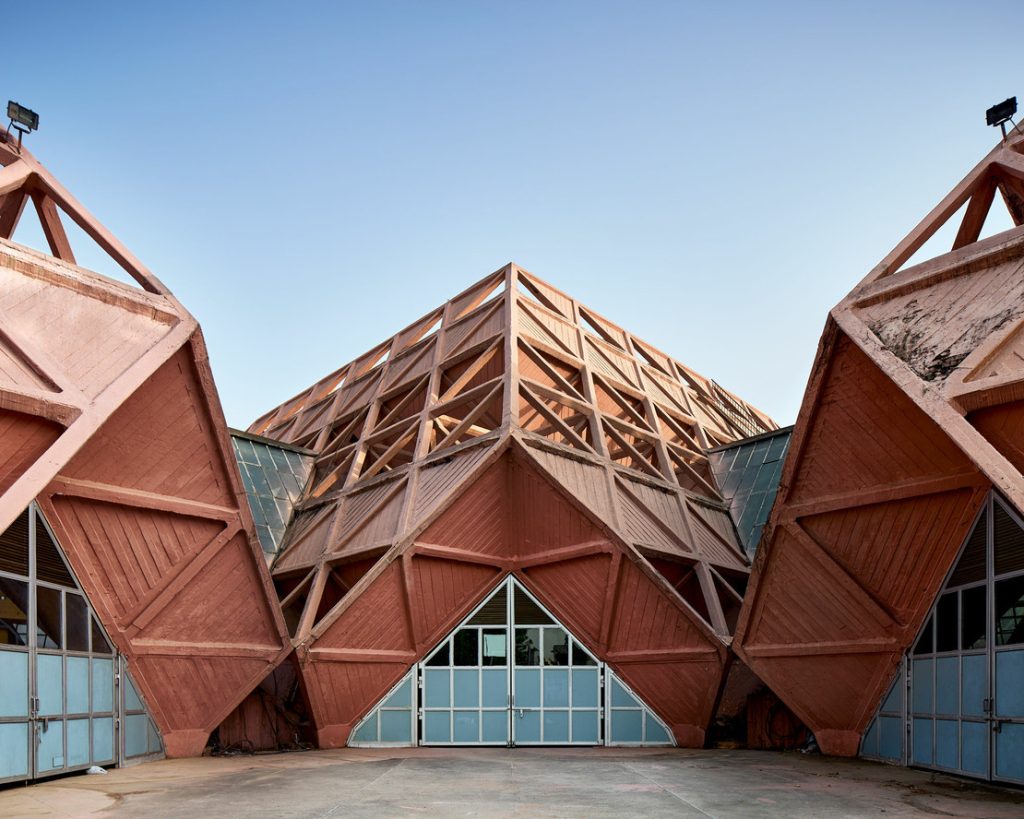
Built: 1972
Demolished: 2017
Architect: Raj Rewal
Location: New Delhi, India
The Hall of Nations was erected for the 1972 International Trade Fair. It was built to celebrate the 25th anniversary of independence. Along with the Hall of Nations, the Hall of Industries also showcased Indian industrialization and international commerce during the fair. The world’s first and largest-span space-frame structure, built in reinforced concrete, holds special significance in India’s post-colonial history.
Besides being aesthetically distinctive, the pavilion is also an engineering achievement. Designed and completed in collaboration between the architect Raj Rewal and the structural engineer Mahendra Raj, the Hall of Nations became an iconic structure in the city. A space-frame building of such massive scale would have been built in steel elsewhere, but the project was also an extraordinary engineering achievement that combined ambition with practicality. Due to financial constraints and the lack of sufficient steel supply, Rewal and Raj decided on concrete. The structure’s lasting significance was probably influenced by the practical choice to utilize concrete, which is more widely available and less expensive. It was a significant structure of its sort, representing both post-independence India’s forward-looking optimism and the economic circumstances of a developing nation.
However, after being in a state of disrepair for years, the Hall of Nations and the halls of industries were demolished over one night. Despite the objections coming from international architecture communities and locals to give heritage status to the buildings, the demolition decisions highlighted the precarious conditions of the post-independence modern structures of India. The architect of the structures, Raj Rewal, called the situation ‘an act of outrage’ because the matter was under the process of sub-judice.
3. Sardar Vallabhbhai Patel Municipal Stadium

Built: 1960
Architect: Charles Correa
Location: Ahmedabad, India
Designed and built by the architect Charles Correa and the structural engineer Mahendra Raj, The Patel Stadium took its name from India’s first home minister. The geometric concrete frame that takes attention from the exterior is a significant engineering work. This distinctive modern look created an icon for the post-colonial period of the country in the center of Ahmedabad. The stadium was designed to host a large range of sports as a complex that included an extensive clubhouse, swimming pool, tennis courts, and especially used for cricket.
The Sardar Vallabhbhai Patel Stadium is one of the largest cricket stadiums in the world. It has the capacity to host 50,000 visitors. The significance of a stadium’s architecture is rooted in its capacity to maximize benefits by hosting a sizable number of spectators, facilitating smooth traffic flow, and providing an unhindered line of sight of the field. In order to provide unhindered sightlines, extremely broad clear spans are necessary, which is the biggest problem in developing the structural shape. So, the most important aspect of the stadium’s architecture is the roof. The span of 20 meters in the Sardar Vallabhbhai Patel Stadium was made possible by carefully balancing the structural mass and rigidity. The folded plate cantilevered roof design excels at minimizing mass and increasing stiffness.
The stadium was mostly used for first-class cricket matches, such as the Ranji Trophy. Also, it hosts significant historic events throughout time, such as the first one-day international match between India and England in 1981. Today, the ongoing decay of the structure takes attention, and discourses on its protection have become a widely talked about subject.
4. Sri Lanka Planetarium
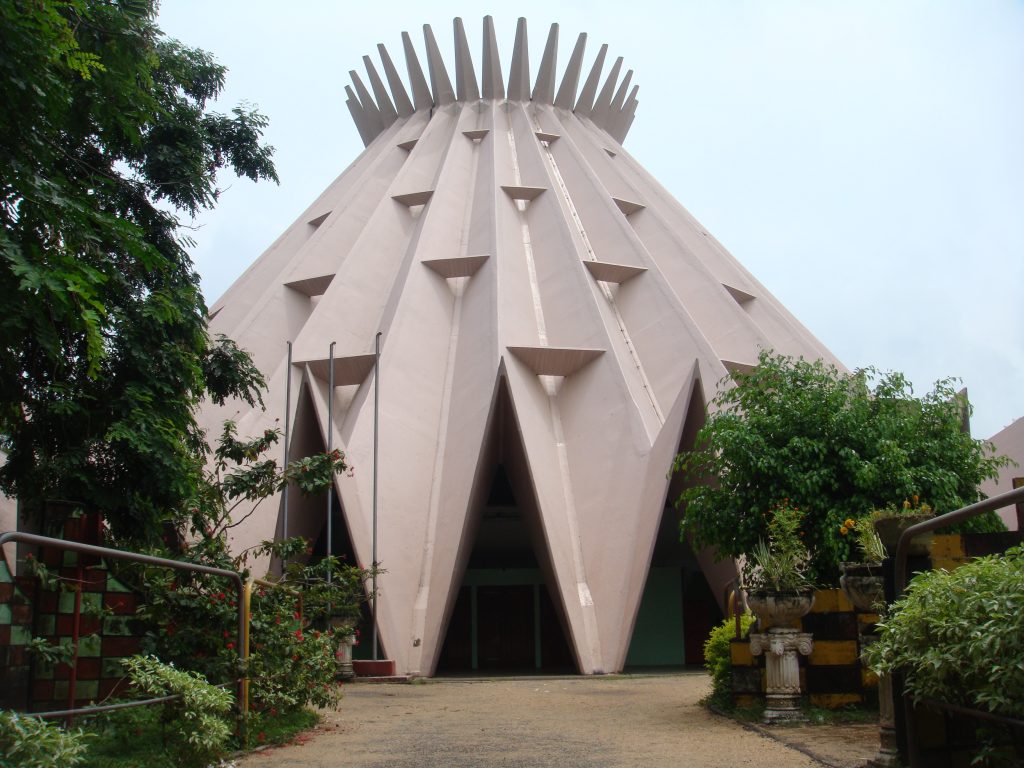
Built: 1965
Architect: A. N. S. Kulasinghe
Location: Colombo, Sri Lanka
The Sri Lanka Planetarium is the first and only planetarium in the country. It is a public planetarium located in Colombo under the Ministry of Science, Technology, and Research. The planetarium attracted tourists and became one of the iconic structures of the city with its unusual, distinctive, and modern design.
The form of the building is a reminiscence of the fully bloomed lotus shape. The interesting shape of the building was also influenced by two different famous buildings on different continents, the Liverpool Metropolitan Cathedral by Sir Frederick Gibberd and Oscar Niemeyer’s Cathedral of Brasília. The building has a reinforced concrete floor and a pre-cast on-site folded plate roof made of prestressed concrete. The planetarium had a significant renovation in 2014, and it now has 570 seats beneath its main dome, where a new 4D/Digital full dome projector shows the universe. It also frequently conducts scientific exhibitions, workshops, and conferences that draw visitors from all across Sri Lanka and abroad.
5. National Parliament House (Jatiya Sangsad Bhaban)
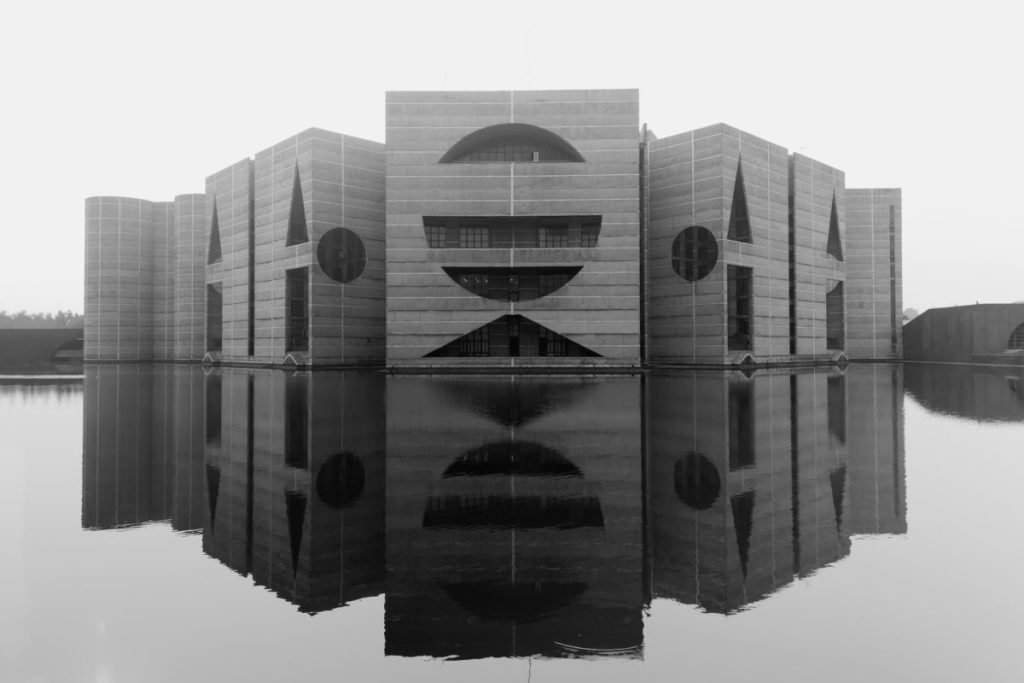
Built: 1962-1982
Architect: Louis Khan
Location: Dhaka, Bangladesh
One of the most famous buildings in Bangladesh, the National Parliament House or Jatiya Sangsad Bhaban, was designed by renowned architect Louis Khan. The building showcases a harmonious blend of form and function and is called the masterpiece of modern architecture.
The entire Jatiya Sangsad complex, which includes a lake, grounds, and MP mansions, was built by Louis Kahn. The primary design tenet of the architect was to honor Bengali culture and heritage while also making the best use of available space. The building’s facade, which features massive walls deeply recessed by porticoes and sizable apertures in regular geometric patterns, is stunning in its simplicity. The complex’s main tower is separated into three sections: the Main Plaza, South Plaza, and Presidential Plaza. Three sides of the Jatiya Sangsad Bhaban’s main structure, as well as the Members of Parliament hostel complex, are surrounded by an artificial lake.
Louis Khan is known for his essential use of light not just as a way to illuminate a space but rather as conceptualizing light as a creator of space.
“In the assembly, I have introduced a light-giving element to the interior of the plan. If you see a series of columns you can say that the choice of columns is a choice in light. The columns as solids frame the spaces of light. Now think of it just in reverse and think that the columns are hollow and much bigger and that their walls can themselves give light, then the voids are rooms, and the column is the maker of light and can take on complex shapes and be the supporter of spaces and give light to spaces. I am working to develop the element to such an extent that it becomes a poetic entity which has its own beauty outside of its place in the composition. In this way it becomes analogous to the solid column I mentioned above as a giver of light.”
Louis Khan
The complex can be counted as a landmark for the city and also for the history of Bangladesh. The design and construction process started in the Pakistan period. Construction was put on hold during the 1971 Bangladesh Liberation War, and after its resumption, the National Parliament House was reconfigured as the parliamentary assembly of Bangladesh’s new national capital. The Jatiyo Sangshad complex is always open to tourists and visitors, despite access to the Bhaban, the Main Building, being restricted to authorized members of Parliament and employees. Crescent Lake and Chandrima Uddan are located north of the complex and are accessible through Lake Road. Together, the two complexes in Dhaka are a prominent tourist destination, particularly on national holidays.
6. Faisal Masjid
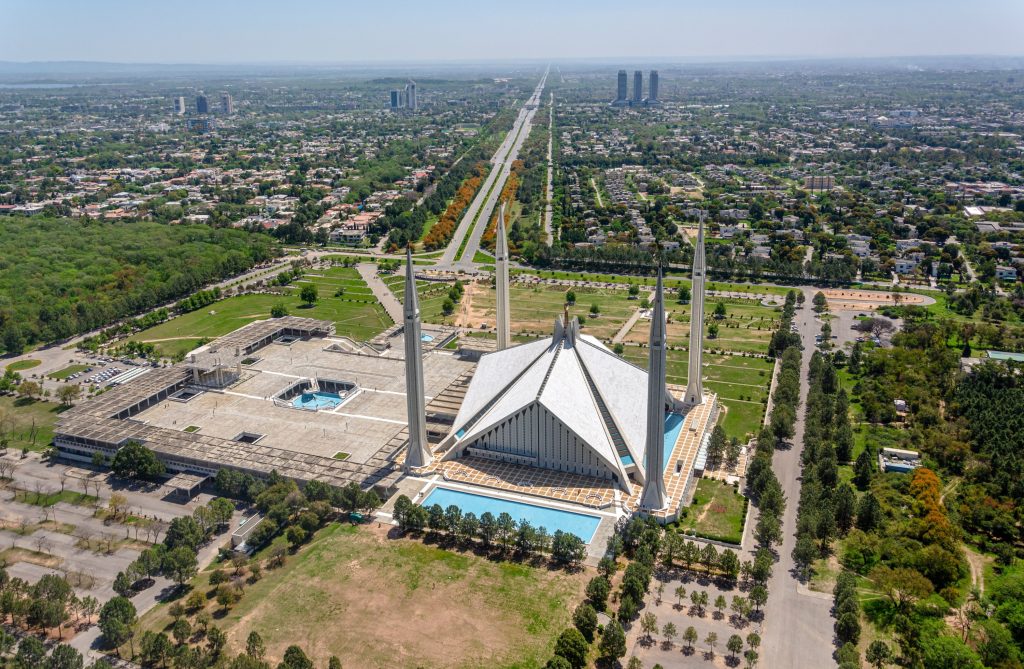
Built: 1986
Architect: Vedat Dalokay
Location: Islamabad, Pakistan
The Faisal Masjid is one of the signature buildings that represent Pakistan’s post-colonial modern architecture. With the unusual appearance of a mosque, it takes attention in the city and is one of the iconic buildings of the country. It is the fifth-largest mosque in the world and the largest in South Asia. The mosque not only represents the independence period of the country and the approach to modern architecture but also highlights it as an important example of contemporary Islamic architecture.
The construction of the mosque started in 1976. Following an international competition, the unconventional design by Turkish architect Vedat Dalokay was chosen. The mosque, which is designed like a Bedouin tent and lacks the usual dome, is encircled by four minarets that stand 79 meters tall. The structure has a triangular worship hall that can accommodate 10,000 worshipers and has eight-sided shell-shaped sloping roofing.
The mosque now serves as a holy emblem of Pakistani culture and has gained international recognition. The mosque has gained national significance in Pakistan because many people think it symbolizes the aspirations and hopes of the nation’s citizens. It is now a significant tourist destination and a significant example of Islamic architecture as a result of its widespread appeal. It attracts travelers from around the nation and from abroad.
7. Dudhsagar Dairy Plant
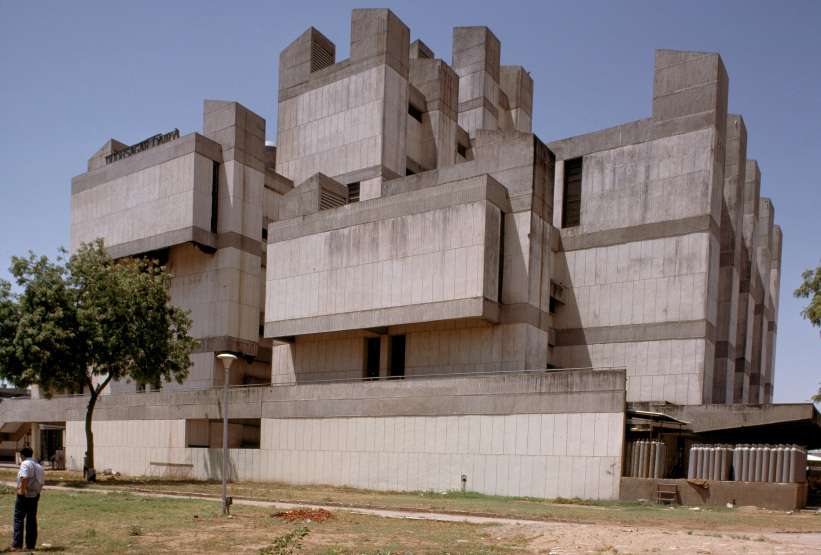
Built: 1973
Architect: Achyut Kanvinde
Location: Mehsana, India
The Dudhsagar Dairy plant is a milk processing plant located in Mehsana, Gujarat, India. Owned and operated by Dudhsagar Dairy. It is a postmodern brutalist structure designed by Achyut Kanvinde in the post-colonial period of the country. The design of the structure represented a new building type for an industrialized nation.
Behind the design, there is a major research process that is made by the architect Achyut Kavinde to truly understand the operation and the mechanism of a dairy factory. The form is made up of concrete grids that are seven meters long and made from numerous orthogonal areas. Bricks are used to construct the walls, and these grids serve as the framework for the plant’s machinery. These equipment’s several levels are accessible by bridges, walkways, and steps. One of the most unique details of the plant is the designed ventilation system. The milk reception facility and the processing plants are surrounded by ventilation ducts that connect all of the spaces rather than exhaust fans to remove heat. These ventilation shafts rise as shafts from the roof at various levels, and the tops of the shafts feature angular caps.
The Dudhsagar Dairy Plant represents more than a factory. It represents the emergence of a new architectural movement in the country, the emerging industrial culture, and the developing independent country. The plant’s abstract, brutalist, modern appearance became a distinctive building in the city and a representation of traditional Indian and modern.
8. National Cooperative Development Corporation (NCDC)
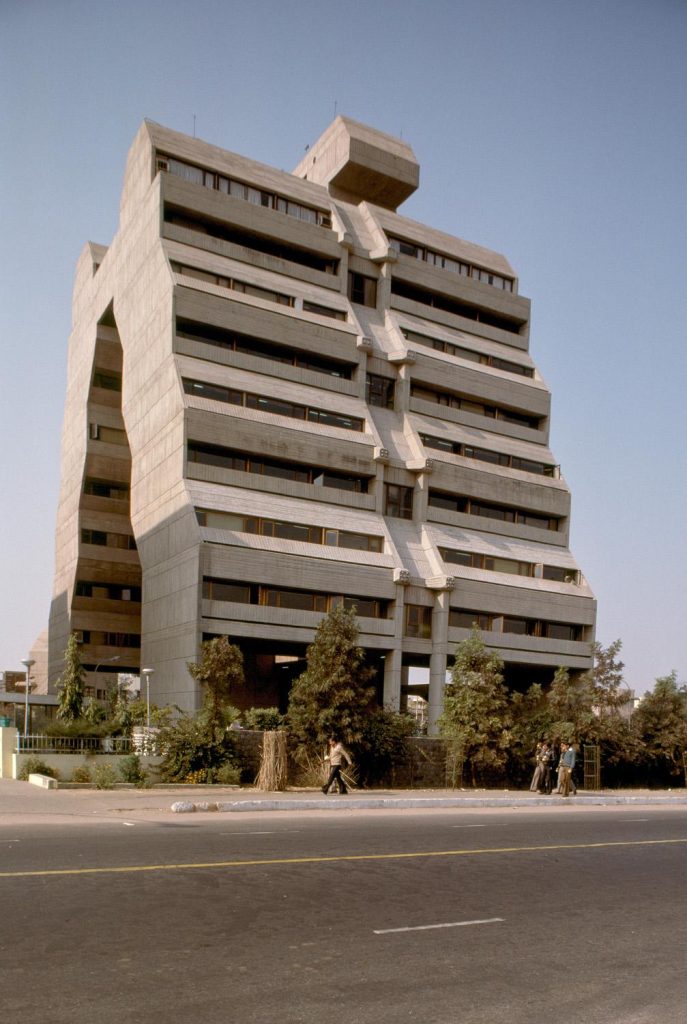
Built: 1978
Architect: Kuldip Singh
Location: New Delhi, India
The National Cooperative Development Corporation building, with a brutalist appearance, has a distinctive position in the post-colonial architecture of India. Besides the brutalist and modernist approach of the building, it also has the reminiscence of traditional Indian temples.
The nine-story building is a testament to the material economy, brave imagination, and the elegance of the handmade. It was conceived by architect Kuldip Singh with the technical prowess of Mahendra Raj. A central corridor connects the service core and two concrete office wings that zigzag to the top of the building. According to Singh, the structure of the building “carries itself visually and structurally,” explaining how the thin shear walls are an integral element of that structure. Regarding the structure’s shape, Singh claims that it was inspired more by some of the leaning gopurams and other religious buildings in southern India. One of the most distinguished elements of the building is the massive enclosed cylindrical staircase in the middle of the entrance.
Kuldip is recognized as one of the most important architects in India for his brave works. He has his marks on Delhi’s modernization and he was an important innovator in the creation of India’s distinctive post-colonial architecture.


